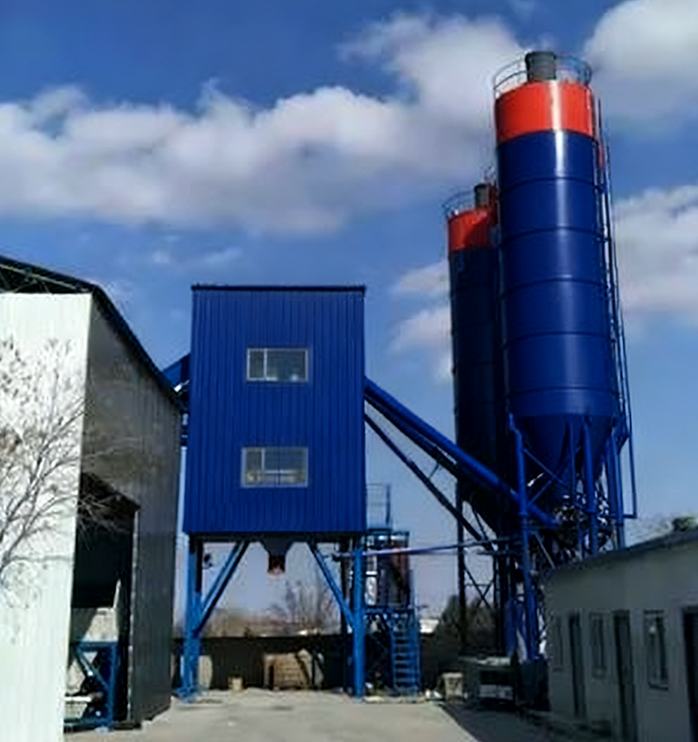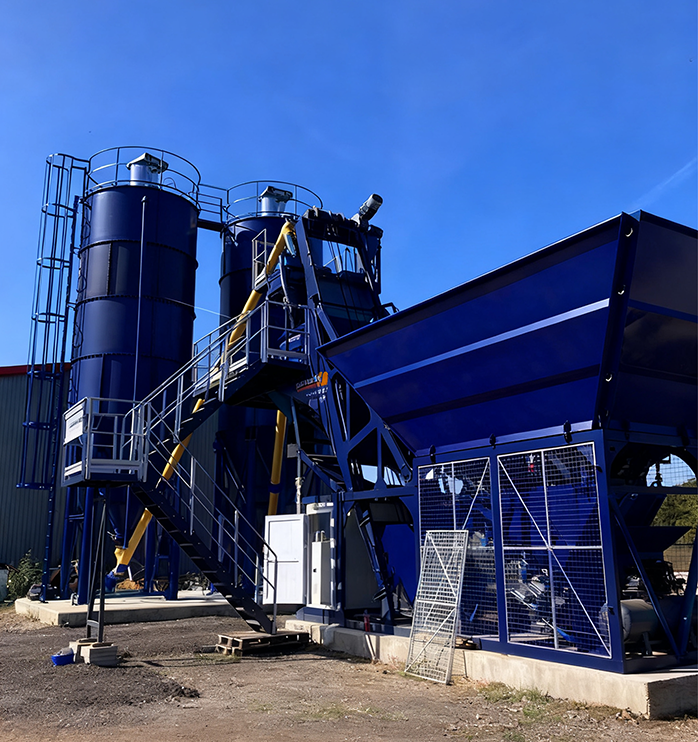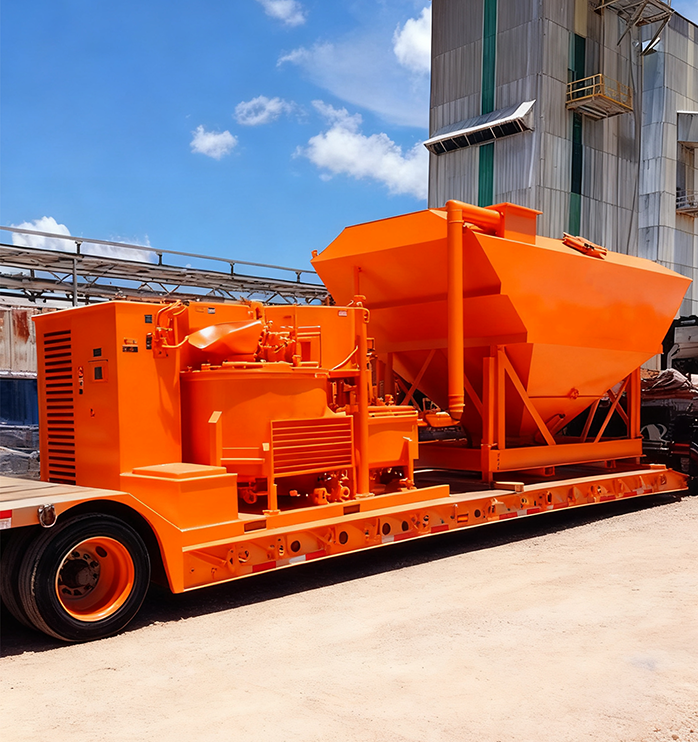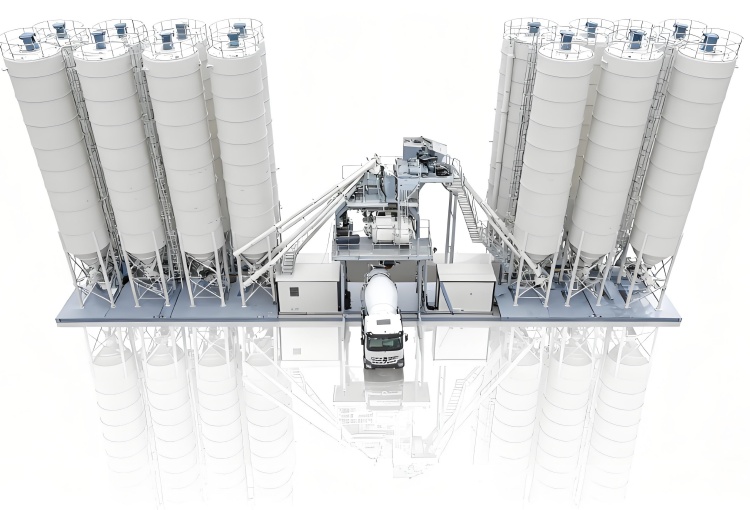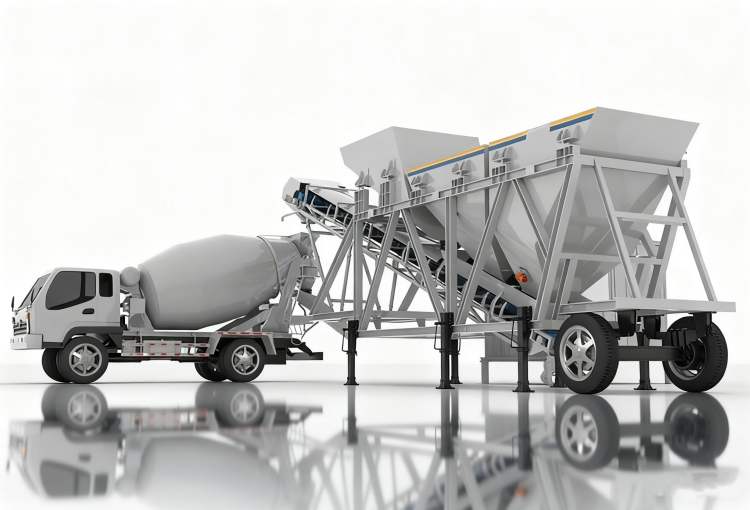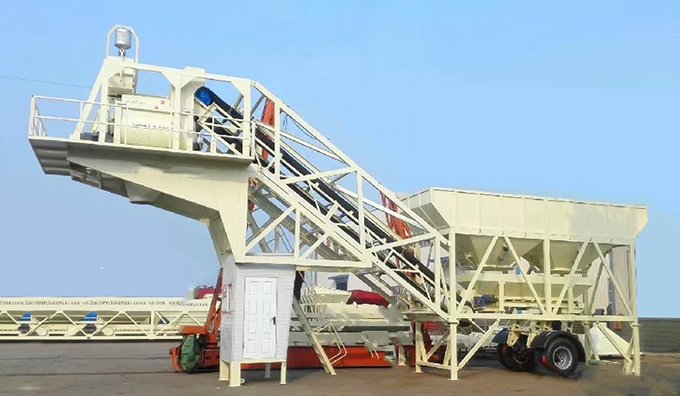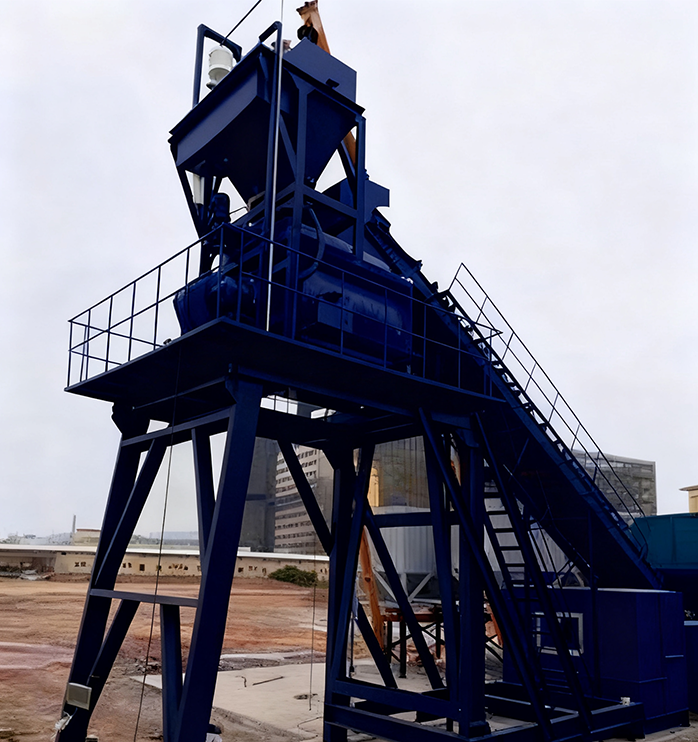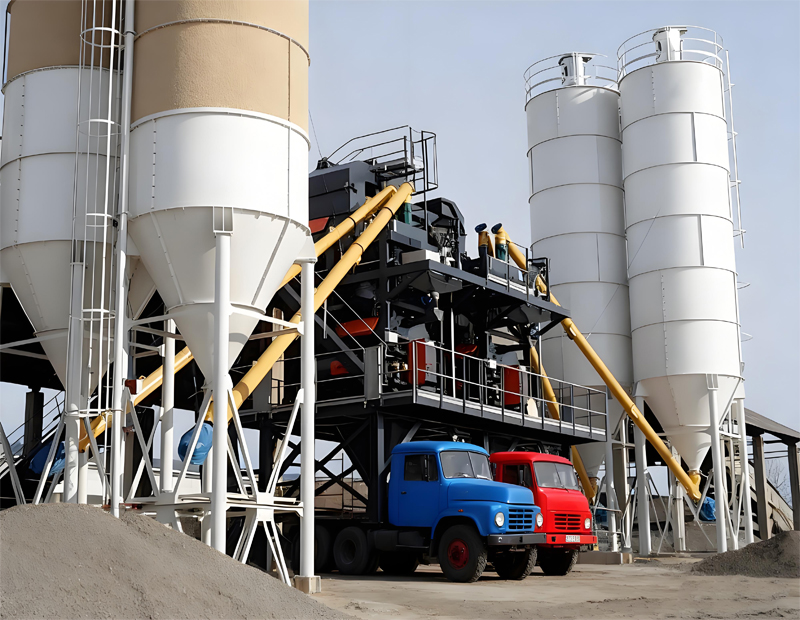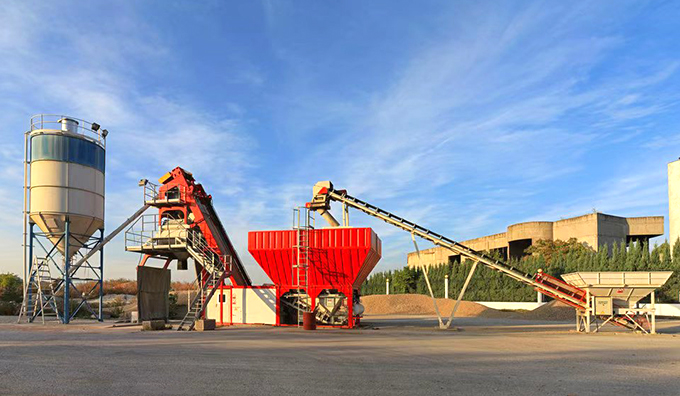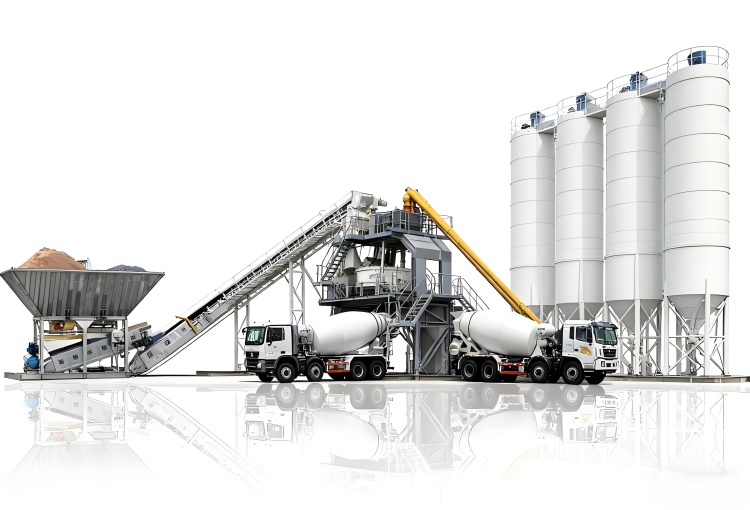As the construction industry evolves, environmental sustainability has become a defining factor in the design and operation of modern concrete batching plants. Governments across the globe are tightening regulations on carbon emissions, water usage, and waste management, compelling manufacturers and operators to rethink every stage of concrete production. This shift has ignited innovation in green concrete plant technology, making sustainability not just a compliance goal, but a competitive advantage.
1. The Global Push Toward Sustainable Concrete Production
International environmental regulations—such as the EU’s Green Deal, the U.S. EPA Clean Air Act, and China’s Dual Carbon Goals—are transforming how concrete mixing plants operate. These policies are pressuring the industry to adopt low-emission technologies and optimize resource efficiency.
Concrete is responsible for nearly 8% of global CO₂ emissions, largely due to the energy-intensive cement production process. As a result, construction companies and batching plant manufacturers are being encouraged to integrate energy-efficient systems, advanced dust collection, and water recycling units into their facilities.
Notably, countries like Germany and Japan now require concrete batching plants to meet specific particulate matter (PM2.5 and PM10) thresholds. Meanwhile, regions like North America are pushing for mobile concrete batching plants and volumetric concrete batching plants to reduce material waste on-site—aligning sustainability with productivity.
2. Environmental Impact: Identifying Core Challenges
Despite progress, concrete production faces three core sustainability challenges:
-
High CO₂ output: Cement accounts for around 90% of concrete’s carbon footprint.
-
Water consumption: Up to 150 liters of water are required per cubic meter of concrete.
-
Material waste: Inefficient batching often leads to overproduction and leftover materials.
In fact, traditional stationary concrete batching plants often lack real-time monitoring systems, making it difficult to optimize batch size and reduce waste. Outdated machinery also consumes excess power, increasing both costs and emissions.
Common Industry Problems
-
Poor calibration of batching scales.
-
Inefficient mixing leading to material loss.
-
Non-compliance with updated local environmental standards.
These challenges highlight the need for smart plant automation, predictive maintenance, and sustainable material sourcing—three pillars of modern plant transformation.
3. Green Innovations in Modern Concrete Batching Plants
To comply with environmental standards while maintaining output quality, manufacturers have developed several advanced solutions.
3.1 Energy-Efficient Plant Design
Modern precast concrete batching plants and dry mix mortar plants are designed with energy optimization in mind. Features such as inverter-driven motors, optimized mixer geometry, and intelligent PLC-based control systems minimize idle time and reduce power consumption by up to 25%.
3.2 Water and Waste Recycling Systems
The introduction of closed-loop water recycling systems allows plants to reuse up to 90% of washout water. Combined with aggregate reclaimers, this technology helps eliminate solid waste discharge, aligning with ISO 14001 environmental management standards.
3.3 Dust and Emission Control
Advanced bag filters, air cannons, and negative pressure systems have become standard in concrete mixing plants. These not only meet but exceed regional dust control regulations, reducing particulate emissions to below 20 mg/m³ in many regions.
3.4 Renewable Energy Integration
Some manufacturers are introducing solar-powered concrete batching plants, particularly in remote regions. These setups are becoming more common in African and Southeast Asian markets where grid access is limited but solar exposure is abundant.
4. Digital Transformation: Smart Control for Green Compliance
The rise of IoT and automation has been a game-changer for sustainability. Through intelligent software, operators can track energy usage, material efficiency, and emissions in real time.
4.1 IoT-Based Monitoring
Integrating sensors with concrete batch plant software enables continuous tracking of temperature, humidity, and cement ratios, ensuring precise mixes and minimal waste. For instance, smart concrete batching plant control panels now come equipped with automated alerts for calibration deviations and maintenance scheduling.
4.2 Data-Driven Efficiency
Cloud-based systems collect operational data from multiple plants, allowing companies to compare performance across regions. This visibility helps identify inefficiencies—such as excessive power draw or uneven load cycles—so managers can take immediate corrective actions.
Interestingly, these systems also support predictive maintenance, reducing downtime by 20–30% while extending the lifespan of critical concrete batching plant parts.
5. Case Study: How Regulations Are Driving Innovation
Example: Europe’s Low-Carbon Concrete Program
In the EU, strict carbon emission caps have accelerated the adoption of dry concrete batching plants and volumetric batching systems. These designs allow for precise mixing at the point of use, drastically minimizing material waste and transportation emissions.
In addition, suppliers like those offering concrete batching plant manufacturers in China are adapting designs to meet European CE and EN standards—enhancing global competitiveness.
Example: Asia’s Water Recycling Mandates
China and Singapore have implemented regulations requiring ready mix concrete plants to incorporate full-scale water recycling systems. These not only conserve water but also help meet environmental inspection benchmarks for licensing renewals.
6. Practical Steps Toward Compliance and Efficiency
For operators seeking to align with environmental standards, the following steps provide a clear roadmap:
-
Audit your plant: Identify energy and material inefficiencies through detailed equipment audits.
-
Upgrade mixing systems: Transition to mobile concrete batching plants or stationary energy-efficient models.
-
Integrate smart monitoring: Adopt IoT-based batch plant software to track sustainability KPIs.
-
Install recycling systems: Implement water and material reclaim systems for closed-loop operations.
-
Train personnel: Regularly train operators on environmental compliance and energy conservation techniques.
By systematically following these steps, companies can reduce their carbon footprint by up to 40% and water usage by 60%—without sacrificing output quality.
7. Long-Term Sustainability Strategies
Achieving environmental compliance is only the beginning. The goal is to make sustainability profitable and scalable.
-
Supplier collaboration: Partner with eco-certified concrete batching plant manufacturers to ensure components meet environmental standards.
-
Lifecycle cost tracking: Monitor the total cost of ownership (TCO) to identify ROI from energy savings and waste reduction.
-
Modular expansion: Use modular plant designs that can evolve with stricter future regulations.
-
Sustainable materials: Incorporate recycled aggregates, fly ash, and slag to further reduce embodied carbon.
Notably, companies integrating these practices are not only meeting environmental mandates but also winning more tenders in government and infrastructure projects due to sustainability scoring.
8. Economic Benefits of Green Plant Compliance
While the initial cost of upgrading to eco-compliant plants can be significant, the long-term savings are substantial.
-
Energy costs: 20–35% reduction through automation.
-
Water savings: Up to 90% reuse efficiency.
-
Maintenance: Predictive systems extend equipment lifespan by 25%.
Moreover, the concrete batching plant cost associated with green upgrades is quickly offset by reduced operational expenses and enhanced brand reputation.
9. Conclusion: Building a Sustainable Future for Concrete Production
The tightening of global environmental standards is not a threat—it’s an opportunity to modernize the concrete production industry. Companies that proactively adapt through innovation, automation, and sustainable design are setting new performance benchmarks for efficiency, quality, and responsibility.
Sustainability in concrete batching is not just about compliance; it’s about leadership. Manufacturers that invest in eco-friendly technologies today will dominate the market tomorrow, shaping a future where every concrete mixing plant contributes to a greener planet.

